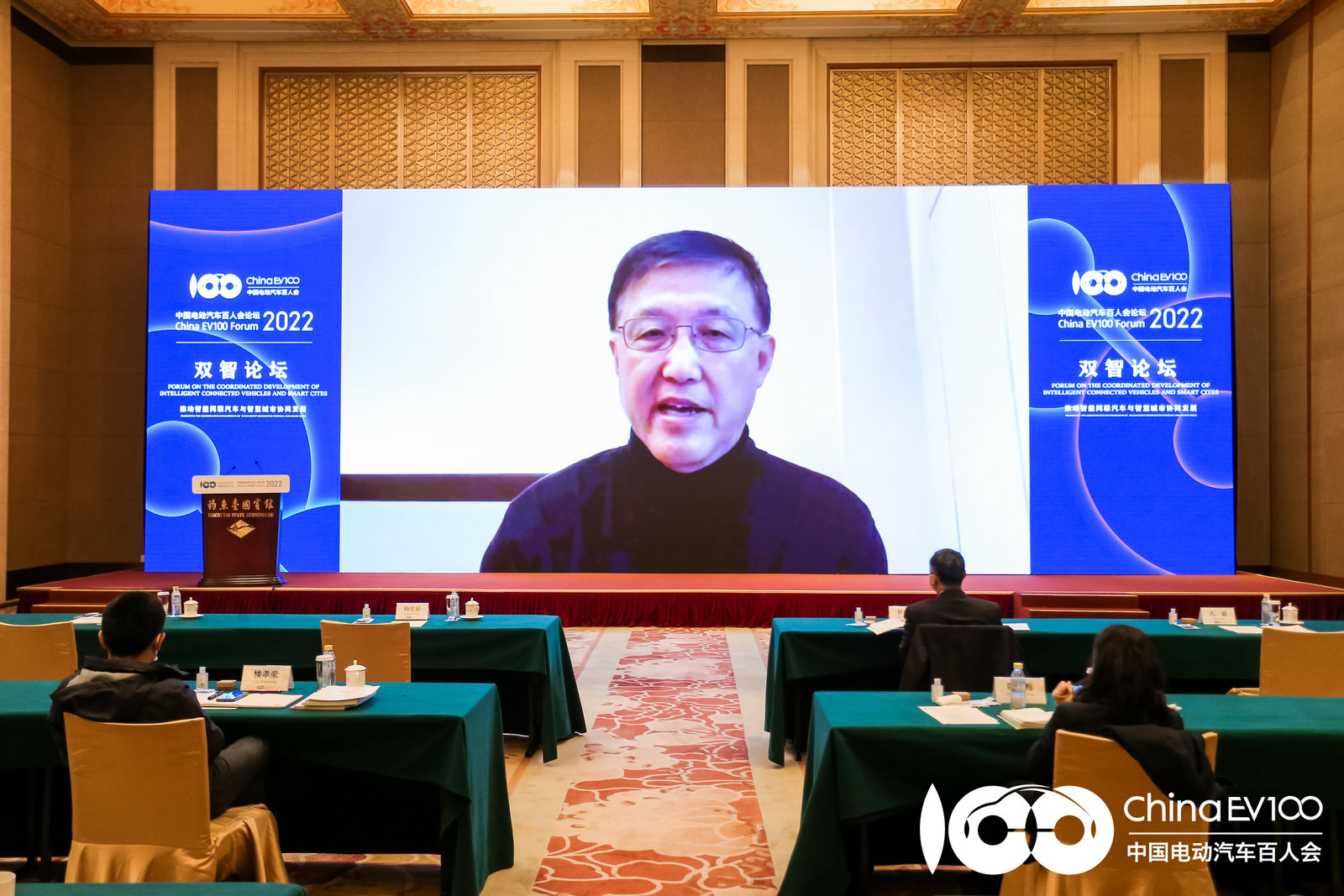On March 25th, the 8th China Electric Vehicle 100-People Forum 2022 “Cloud Forum” officially kicked off in Beijing. On the opening day of the conference, the Smart Mobility Forum with the theme of “Promoting the Collaborative Development of Smart Cars and Smart Cities” was opened.
At the forum, Ma Wei, the CEO of Xidi IMa and the president of Changsha Intelligent Driving Research Institute, shared the achievements and experiences of “Intelligent Networked Assistance for Urban Bus Travel”.
Today, among all means of transportation, buses carry about 200 million passengers per day, compared to about 60 million for subways and 130 million for ride-hailing cars. However, there are problems with unreasonable bus stops, delays, long wait times, and traffic congestion with private cars, which have led to a gradual decline in the bus occupancy rate.
Changsha City uses the latest intelligent networked technology, and only needs to install a box at a signalized intersection, instead of a camera in every direction. When it receives a request signal from the on-board OBU, it will judge whether to give priority to this bus.
Thanks to the C-V2X national standard, it can achieve millisecond-level delay, centimeter-level positioning, and ultra-long-distance sensing. Based on the passenger capacity of the bus, priority is given to those with more passengers.
For example, if a bus arrives at the traffic light just as it is about to turn red, it will wait until the bus has passed before the light turns red.
In the first half of 2021, Xidi IMa tailored two routes with an active bus priority system. They saved an average of 27.5% of commuting time compared to private cars following the recommended route on the map, and 30% of commuting time compared to regular buses. About 24.7% of the passengers who used to travel by private car now take the bus because it is faster with bus priority. This has greatly eased traffic pressure and reduced carbon emissions.
What is the value of active bus priority? Ma Wei said that many new technologies are often praised but fail to be adopted. Their value is difficult to calculate and is generally long-term. However, the value of bus priority is relatively easy to calculate, and it has three levels:
The first is ticket price, which is the first level of value. It’s very simple. If each vehicle saves 20% of its time and attracts one more passenger at a price of 2 yuan, the revenue will increase by about 36,000 yuan in three years and the investment can be recovered. If each trip can carry 5 more passengers, the net income of the single bus will be 140,000 yuan. If this value is extended to the whole city, for example, in Changsha, it can increase revenue by 1 billion yuan.The second aspect is carbon pricing. Currently, our carbon trading has just begun, and the price is relatively low at 40 yuan per ton. Even with a carbon price of 40 yuan per ton and the city’s carbon reduction of 2.5 million tons, we can save 100 million yuan annually and 300 million yuan in three years, which can also recoup our investment. With the rise of the carbon price, it will reach 200-300 yuan/ton in the next few years. If we reduce emissions by 2.5 million tons, we can save 750 million yuan annually and 2.25 billion yuan in three years, which will bring a net profit of 1.89 billion yuan. These figures are still much lower than the carbon prices in Europe and the United States. Currently, Europe’s carbon price has reached 71 euros/ton (approximately RMB 497), and the United States is 51 US dollars/ton. It’s even crazier in California, where the carbon price per ton is 200 US dollars. If we calculate based on California’s carbon price, we will save 500 million US dollars worth of carbon emissions annually, which is a significant amount. If we continue to advance in the fields of carbon reduction and intelligent transportation in the future, carbon pricing will actually bring us more benefits.
The third aspect is social value. Every new technology, such as intelligent connected vehicles and autonomous driving, is actually a revolutionary technology. As these technologies can quickly reach every ordinary person, they are beneficial for the public and promote urban public transportation, the development of transportation infrastructure, carbon neutrality, and have a significant impact on our overall economy and the public’s sense of gain. For example, the investment in one kilometer of subway construction can result in a comprehensive upgrade of low-carbon travel throughout the city of Changsha, and it can be completed in just six months. We know that subway operation is low-carbon, but subway construction is high-carbon, and it will take 15 years to balance it out. Currently, Shidi IMa has transformed more than 70 routes and over 2,000 vehicles in Changsha.
This article is a translation by ChatGPT of a Chinese report from 42HOW. If you have any questions about it, please email bd@42how.com.
